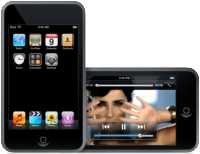Grokking the iPod

Apple's Wednesday announcement of new iPods appear to have shaken some otherwise smart people. Perhaps its the forest-for-the-trees analogy: they can't tear their eyes away from the shiny iPod in the hand towards the boxes that will be sitting on the shelves during the holiday season.
Here are some examples:
“I for one will never get an iPhone now that the iPod touch can go Wi-Fi,” a nameless ZDNet colleague quoted by my Apple Core partner Jason O'Grady.

"And I'm not sure why Apple didn't go with a hard drive-based iPod touch, which would have really given it more capacity than the 16GB it now offer," Ryan Kim, Sept. 6, 2007, San Francisco Chronicle print edition.
All of these criticisms sound right. But at the same time, they are all wrong. They look at the iPod as a one-off and not at the forest of iPods and a wide market. It's all about the platform.
Firstly, makers of consumer devices want to provide a range of products with different sets of capabilities and styles, and with different entry points (prices). Apple does this well with its expanded iPod lines.
For many onlookers, the iPod touch seems to be the most troubling product. It looks like the iPhone but it's been "dumbed down." Is there no method to Apple's perceived madness?
However, if we look at the lines as a progression of portable audio and visual content players, the dissonance is removed. If you want voice communication and the rich integration of applications and services along with a content player, then get the iPhone. Otherwise, stick with a rich content device.
Here's the product lineup by class:
Audio-only. The iPod shuffle is the stocking stuffer.
Audio-centric, video-capable. The iPod nano and iPod classic appeal to different sets of customers through capacity points, portability and pricing. Some people want to carry around every song they own in a slightly bigger and more expensive device, while others are happy with a subset of their content for a lower price.
By my past purchases, I'm in the iPod shuffle and iPod nano camp. However, the slim new iPod classic almost made me a believer.
Video-centric, Internet-capable. The iPod touch is a content-centric, Internet device without the communication capabilities of the more expensive smartphone. Still, it uses the same, slick hardware and software interface as the iPhone for the Internet browsing.
Sure, you can connect with Google Mail on the iPod touch. Go for it. However, if you value real integration, Apple suggests you step up to its content and communications platform, the iPhone.
Content and communications. The iPhone combines content, Internet computing and voice capabilities. And now it's less expensive.
But there's more to it than segmentation.
Just as important, Apple has made the iPod a hardware and software platform. That's unusual in the market of consumer electronics devices.
Often, consumer devices are designed by separate development teams within a company, with little marketing or engineering connection to one another. There is often little reuse of parts by different models, and often the devices use different connectors.
Take a look in the drawer where you keep old, discarded devices (I admit I'm a pack-rat). I have a bunch of old PDAs and cell phones gathering dust in a drawer. Each seems to have a different interface and power connector and resulting dongles.
The iPod platform is much different. Except for the iPod shuffle, the entire line, including the iPhone, uses the same connector and this connector has been carried on through several generations. The devices are managed with the same cross-platform client software and connect to the same online services. This is different for many (most) other content devices on the market.
So often, even when a company offers a range of products, it's not a platform. The pieces of the hardware, software or services puzzle aren't in-line or don't interoperate. It's a technology approach, not the solution approach that Apple takes.
The competition have found that this is something that Apple does better than anyone else. And worse for them, it's something that customers value.